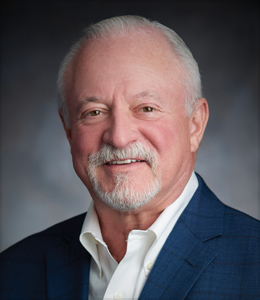America’s power grid is stable today, but a surge in demand is on the horizon. As innovations in AI (artificial intelligence), cloud computing and advanced technologies accelerate, energy capacity will increase, pushing the grid to new limits. Preparing for this shift is critical to meet the future demands of our connected, data- driven world.
In fact, cloud computing and generative AI consume 5% of the grid today. By the end of the decade, that number is projected to be as high as 12%. This is a big challenge for the power industry, but it also presents a new opportunity.
Managing this demand will require a coordinated effort across industries with innovations in energy storage, transmission and infrastructure all playing important roles.
Up and-coming energy sources
Extreme weather events such as last September’s Hurricane Helene, which caused widespread devastation and the loss of power for millions in Virginia and North Carolina, January’s Palisades wildfire near Los Angeles that destroyed thousands of structures and the growing severity of winter snow and ice storms all serve as powerful reminders of the need to upgrade, modernize and protect the power grid.
There is growing concern that there are not enough green energy sources to keep up with energy demands, particularly with the proliferation of power-hungry AI data centers. This concern is driving renewed interest in nuclear and natural gas, sources that appear to align with the interests of the new administration.
Nuclear energy is making a comeback. Initiatives such as the potential restart of the Three Mile Island plant in Harrisburg, Pennsylvania, as well as innovative startup companies exploring smaller-scale nuclear facilities positioned closer to data centers, may be harbingers of things to come. In theory, these nuclear power plants would serve as a local source to feed the data centers, which are expected to continue to pop up across the country.
Powering the future of our nation will require more than a single energy source, but a diverse mix working together to meet our anticipated energy demands for work and home.
Challenges and risks
Two of the biggest risks to a vulnerable power grid are wildfires and brownouts – temporary power outages implemented when electricity demand exceeds supply. These challenges are interconnected because wildfires in California have triggered rolling brownouts.
One of the main risks that puts the grid in a vulnerable state is reliance on a single power source, which is often too limiting and fails to meet the growing demands. Future solutions must consider anticipated growth plus our current electricity requirements. It also needs to account for forecasted computing and AI demands and any other long-term, evolving requirements of power infrastructure.
For example, the reshoring of manufacturing over the past several years has added pressure to the grid, emphasizing the need for a more resilient system to meet current and future demand, as well as protect national and economic security by reducing dependence on equipment suppliers outside of the U.S. To safeguard existing resources, the industry must ensure smart investments in newer, more sustainable options that diversify the nation’s power sources.
Modernizing the grid
To effectively modernize the nation’s aging power grid and address current challenges, several key initiatives must be considered.
One method of making the infrastructure less susceptible to wildfires is to bury the power lines. The grid is not equipped to handle the growing frequency and destruction of wildfires as temperatures continue to rise and droughts become more common. Buried lines also increase overall power line safety and reduce outages due to downed wires.
In addition to reducing fire hazards, much of the country’s infrastructure dates back to the 1950s and 1960s, and energy consumption looks very different than it did 75 years ago. Consequently, the grid requires extensive retrofitting and modernization to meet today’s demands. This means not only replacing older equipment with modern, efficient alternatives but also introducing protective coatings developed with cutting-edge technologies to improve durability and extend the lifespan of existing components. These measures would allow critical infrastructure to continue serving the nation’s needs in a much more sustainable manner without an all-out replacement of existing equipment.
High-performance powder and liquid coatings can help reinforce and protect aging transformers, power lines and metal frameworks against extreme weather con ditions, corrosion and wear over time. By applying specialized coatings engineered for years of outdoor exposure, the grid infrastructure can better withstand the elements, significantly extending the time needed before full equipment replacements become necessary.
Durable, long-lasting coatings are even more important today because lead times for the manufacturing of transformers are no longer a matter of weeks, but years. When manufacturers, municipalities and utility organizations can tap into the power of high-performance paints and coatings, they can effectively and collectively extend the lifespan of critical infrastructure elements such as switchgear, transformers, power breakers, generators and more. Coatings engineered with the latest technologies offer a clear benefit in the manufacturing of electric-generating equipment, and from a retrofitting perspective, re-coating with high-performance solutions can renew equipment for another lifetime of use. This adds to the overall sustainability of the equipment and the grid.
In addition, anti-corrosion coatings applied to grid-support structures (such as steel towers and substations) provide additional protection against rust and degradation. This helps to preserve structural integrity and durability.
Thinking ahead, the best solution for modernizing the grid might be a middle-ground approach that blends replacing equipment with modern machines, while retrofitting much of the existing equipment with safety, reliability and sustainability in mind.
Because it is not feasible to modernize and replace all equipment (because the capacity to manufacture new equipment does not currently exist), retrofitting electrical equipment with high-performance coatings must be part of the equation.
Trending: smart grids and microgrids
Microgrids and smart grids represent a shift in how energy is produced, stored distributed, paving the way for increased renewable energy integration. Unlike conventional grids, smart grids allow for decentralized power generation, where individual sources such as solar panels on a homeowner's roof feed energy back into the grid. Smart grids take on more of a community-based approach.
In addition, smart grids now incorporate battery storage, which was not possible five years ago. When battery storage capabilities are tied to the grid, it enables excess energy generated during sunny or windy periods to be stored and redistributed when demand is high or conditions are not ideal. The rapid advancements in battery technology over the past five years have made large-scale energy storage more viable and affordable.
Furthermore, microgrids will play a key role in the future of our electricity infrastructure. These are small-scale electrical networks that can operate independently or together with the larger grid. From a cost perspective, when owned privately, they allow users to sell power back to the grid, making their operation more affordable.
Overall, microgrids enhance the reliability and resiliency of electric supplies in areas prone to outages or high demand. This setup reduces dependency on traditional power sources, such as gas turbines, which were previously essential when renewable sources failed to meet demand. Therefore, microgrids will play an increasingly important role, especially when sunlight and wind are limited.
With the ability to leverage supplemental battery storage capabilities, microgrids can harness stored energy and release it as needed. This will help keep the grid running smoothly, making it more dependable while reducing reliance on fossil fuel backup systems. In essence, instead of relying on gas-powered turbines when demand rises or renewable energy drops, the nation can access stored clean energy as needed.
As AI and cloud computing grow in adoption and become even smarter, these technologies will consume even more energy. Therefore, microgrids and smart grids will play a critical role in meeting future energy needs, supporting sustainable growth and enabling grid expansion across the nation.
Securing the next era of power
As the U.S. faces rapidly growing energy demands, grid modernization is an imperative next step. While many already are, municipalities, utilities and government agencies must prioritize grid hardening, reliability and capacity expansion to meet this surge in demand. Adoption of the latest technologies and bolstering the durability of electrical equipment through extra measures such as the proper coatings will prove imperative in the coming decades. A combination of strategies that includes embracing multiple energy sources, retrofitting and re-coating existing infrastructure with advanced solutions and installing new equipment, will be essential for creating a grid that can reliably sustain the 24/7 access that modern life requires.
By enhancing the reliability of its electricity supply, the U.S. can remain a pioneer in power innovation and investment, charting a course for an energy infrastructure network that is fit for the future.

Maria Lamorey is the commercial strategy manager – Americas for PPG. With more than 20 years of industry experience, Lamorey plays a leading role in PPG’s commitment to delivering high-performance coatings products across a variety of general industrial applications. Lamorey is a certified instructor for a nationally PDH-accredited course on material science in electrical equipment design and has been an active member of the IEEE Transformer Committee and NEMA (National Electrical Manufacturers Association).

Nelson Squires is executive vice president and general manager, Electrical and Electronics Solutions (EES) at Wesco. Prior to this appointment in June 2020, Squires held several previous roles, including senior vice president and Chief Operating Officer, group vice president and general manager for Canada and international and group vice president and general manager of Wesco’s Canadian operations. Before joining Wesco, Squires was vice president and general manager of North American Gases and president of Air Products Canada Limited for Air Products and Chemicals, Inc. Squires served as a Captain in the U.S. Army and holds a Bachelor of Science degree from Wake Forest University.







